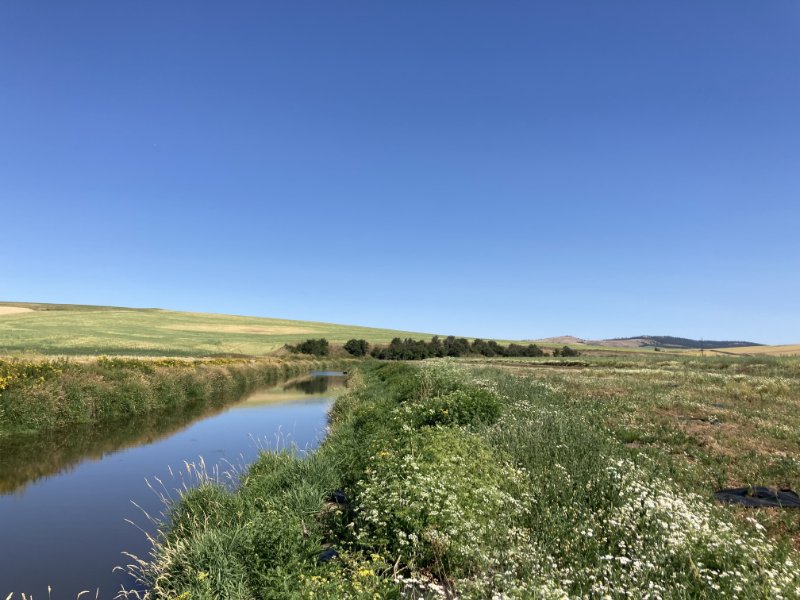
Healthy riparian areas like this in Hangman Creek are important because they shade the water, keeping it cool, and provide woody debris, food, and shelter for fish and wildlife.
Thousands of willow whips and hundreds of potted stock were recently planted along Hangman Creek, amounting to the single largest riparian restoration effort in Spokane County’s history. The project was the first of its kind in Eastern Washington and will transform 169 acres of land previously used for crops into habitat for wildlife and will help improve water quality.
“The project was an enormous success,” said Mitch Redfern, environmental specialist for Ecology. “It reinforces the fact that healthy farms and healthy riparian areas can coexist.”
The Hangman Creek Riparian Restoration and Conservation Program was funded by us through the Washington State Centennial funds. The Spokane Conservation District received a pass-through grant of just over $3 million for this project.
With the innovative grant program, landowners agree to 15-year lease contracts and are paid $300 per acre for land along fish-bearing streams that is taken out of production and put into riparian buffers. It also covers 100% of the installation, materials, and long-term planting maintenance costs.
“The pilot program helped eliminate barriers that many producers have pointed to in the past, including weed control, long-term contracts, economically viable rental rates, and maintenance funding,” said Brook Beeler, Ecology’s Eastern Region director. “We heard those concerns, worked creatively and cooperatively on solutions and are encouraged by its success.”
All totaled, nine landowners agreed to participate in the program and 45,508 linear feet of bank along Hangman Creek will be restored. Prior to this program, less than 20 acres of riparian restoration had been implemented on dryland crop ground in the Hangman watershed over the last several decades.
Next up, the Spokane Conservation District will continue the implementation and maintenance of the riparian program over the next five years. It will take 10-15 years of growth to provide many of the functional benefits for the watershed.
Once established, this new habitat will provide crucial benefits to fish and wildlife. It will also help to stabilize the shorelines from excessive erosion and prevent runoff from reaching the water. As the trees and shrubs continue to grow, they will shade the water and help regulate the temperature in the watershed in the hot summer months.
“Now that an effective framework for riparian restoration has been established in Hangman Creek, we’re eager to see it come to life and continue to grow,” said Redfern. “With additional funding on the way and landowners that are interested in participating, we’re sure to see transformative change in this watershed.”
Why Hangman Creek?
Hangman Creek is a major tributary of the Spokane River that originates in the mountains of Idaho and flows northwest toward its confluence with the Spokane River. Hangman Creek and its tributaries are listed among the state's polluted waters.
Riparian areas are important to Hangman Creek because they shade the water, keeping it cool, and provide woody debris, food, and shelter for fish and wildlife. Planting trees and shrubs in riparian areas reduces stream temperatures, stabilizes stream banks, and helps reduce runoff pollution.

